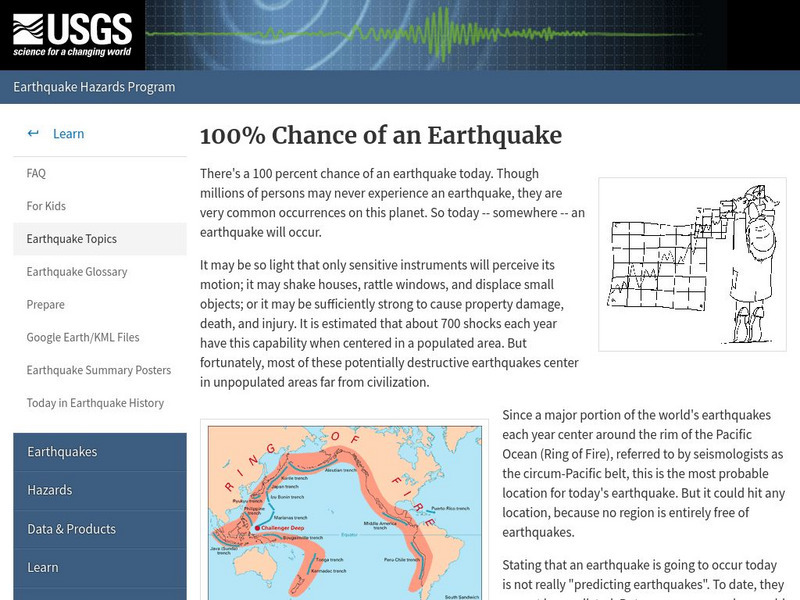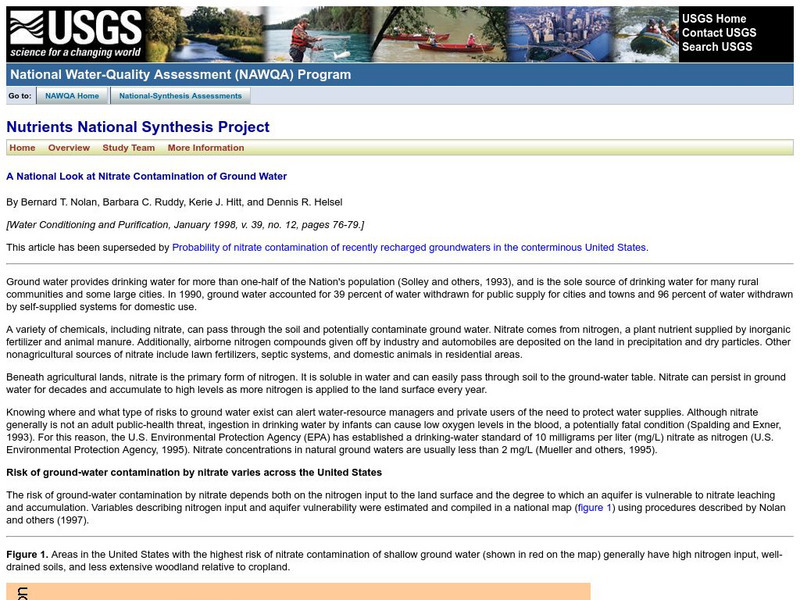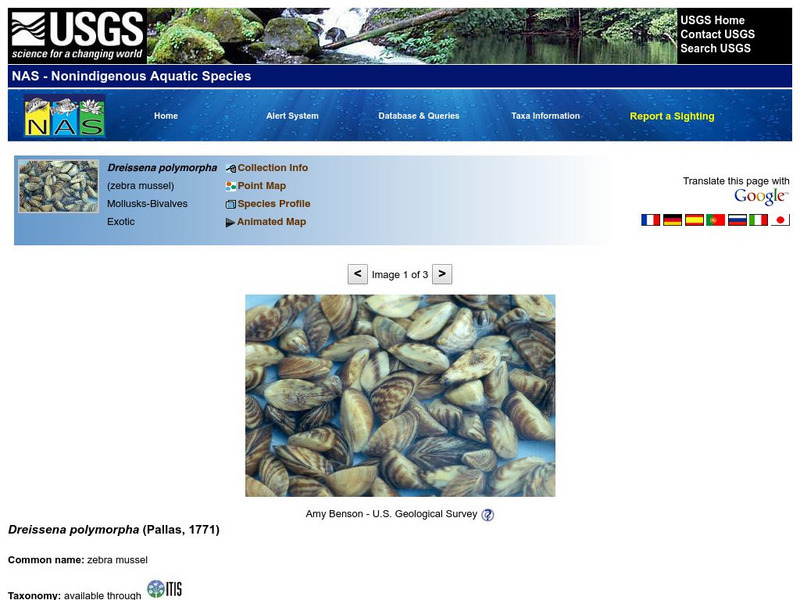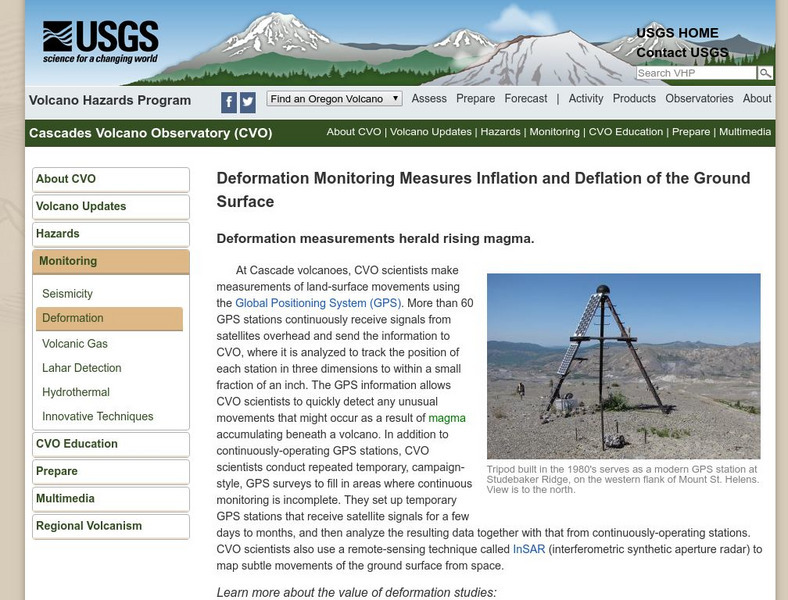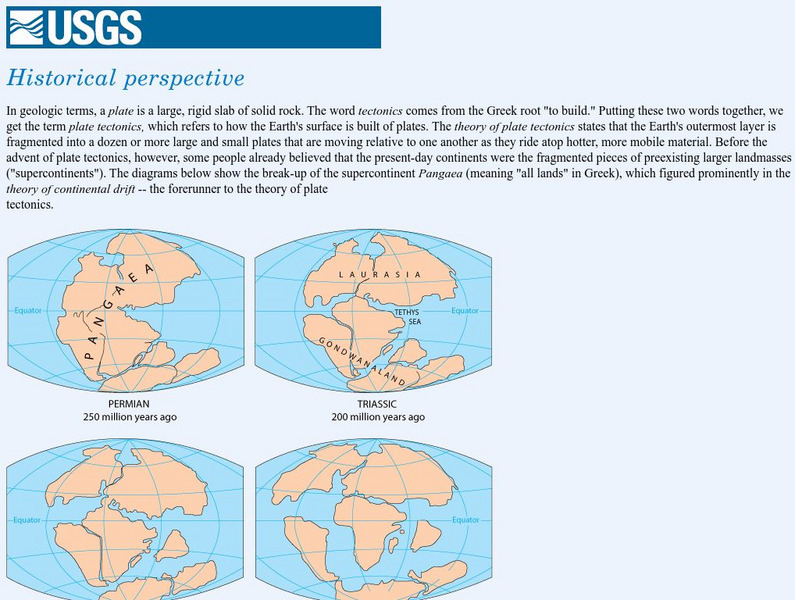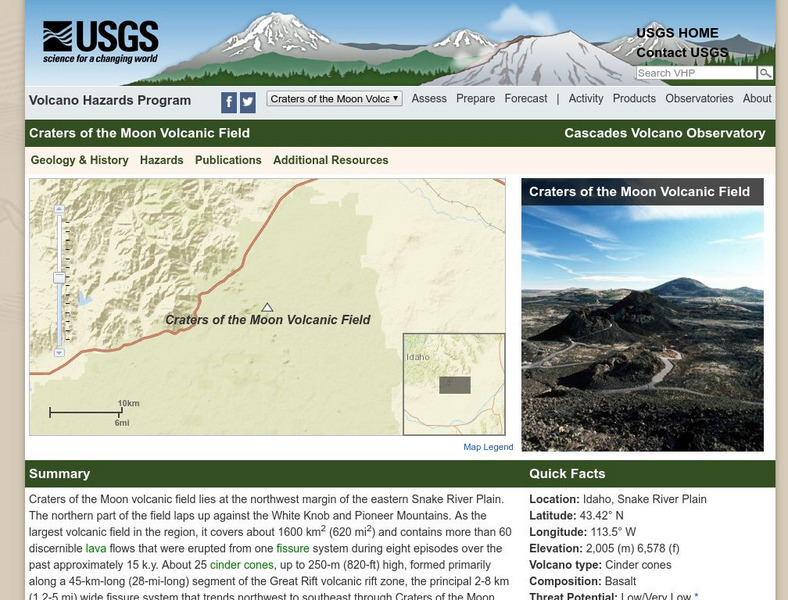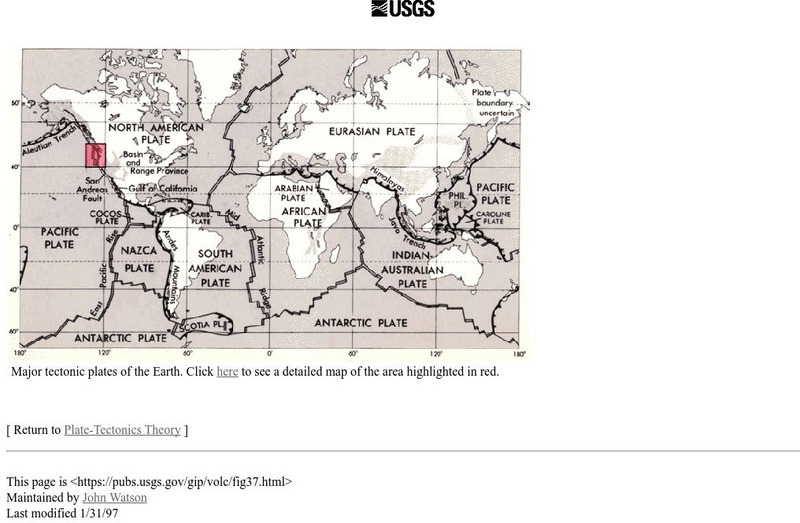US Geological Survey
U.s. Geological Survey: What Causes Earthquakes?
USGS provides the definition of a fault, the basics of earthquakes, the theory of plate tectonics, location of plates and earthquakes, and embedded links to related material.
US Geological Survey
U.s. Geological Survey: 100 Percent Chance of an Earthquake
Did you know there is an earthquake somewhere on Earth every day? Read about this very common Earth event.
US Geological Survey
U.s. Geological Survey: Cool Earthquake Facts
The U.S. Geological Survey complied a list of 36 fascinating facts about earthquakes. A good, short informational text piece which could be used for a content area reading lesson.
US Geological Survey
U.s. Geological Survey: Earthquake Science Fair Project Ideas
Twenty earthquake-related science fair project ideas. Each idea has a short description of a possible investigation.
US Geological Survey
Usgs: A National Look at Nitrate Contamination of Ground Water
This site features a map of the United States which indicates areas with the highest risk of nitrate contamination in ground water. Links to a description of ground water contamination in U.S.
US Geological Survey
U.s Geological Survey: Nonindigenous Aquatic Species (Nas): Zebra Mussel
A detailed site that describes the physical characteristics of the zebra mussel, provides a map that depicts the native range of this shellfish, discusses the means of introduction into our country, and delves into the impact of this...
US Geological Survey
U.s. Geological Survey: Minerals Information
General information about minerals in sports and safety.
US Geological Survey
U.s. Geological Survey: What's the Difference Between Weathering and Erosion?
Brief explanation of the difference between weathering and erosion.
US Geological Survey
U.s. Geological Survey: Volcano Monitoring Using Global Position Systems
Learn how the U.S. Geological Survey uses global positioning systems (GPS) to monitor active volcanoes.
US Geological Survey
Usgs: Historical Perspective
A graphic map of Lauraisia is provided at this site on continental drift and the history of the Earth. You can also search text to find reference to Laurasia.
US Geological Survey
U.s. Geological Survey: Mineral Resources in Deserts
This page contains information about mineral deposits in our Southwest deserts.
US Geological Survey
Us Geological Survey: Polar Dinosaurs in Australia?
One of the richest dinosaur deposits in Australia is located at Dinosaur Cove. It is here that scientists first discovered 'polar' dinosaurs, described here, a kind of dinosaur that was able to exist in a cold climate, unlike others that...
US Geological Survey
Usgs: Materials Flow and Sustainability [Pdf]
This site is a fact sheet that uses illustrations to review the steps minerals go through to be made into useable products, and also how some materials can be recycled and returned to the environment.
US Geological Survey
U.s. Geological Survey: Quick Reference for Volcano Types
Succinct descriptions of the different kinds of volcanoes, with additional links for each.
US Geological Survey
USGS: Urbanization and Water Quality
This website focuses on water quality issues in relation to urbanization. There are helpful links to brief articles on topics like storm runoff, wastewater, and the underground water table. Click "Water Science School HOME" to access the...
US Geological Survey
Cvo: Craters of the Moon, Idaho
Site enables users to learn more about the volcanoes of North America. Offers links to visit a volcano as well as other items of interest.
US Geological Survey
Usgs: Earth Surface Dynamics (Research Activities)
This site from USGS provides several activities to help understand the interrelationships among earth surface processes, ecological systems, and human activities. Also included are links to new findings and programs concerning Earth...
US Geological Survey
U.s. Geological Survey: A Child's View of Earthquake Facts and Feelings
This is an excellent resource for children, parents, and teachers who need to talk about earthquakes. It includes guides for teachers and parents and an ABC Children's Book about earthquakes.
US Geological Survey
Usgs: Major Tectonic Plates of the Earth
A map of major tectonic plates of the Earth showing where the Eurasian and Indo-Australian plates are located.
US Geological Survey
Usgs: Volcano Watch
Read what the scientists at the Hawaiian Volcano Observatory have recently observed about the state of Hawaii's volcanoes in the the weekly "Volcano Watch" newsletter. Issues of the newsletter from 1994 forward are archived on this site.
US Geological Survey
Usgs: What Is Geologic Time?
Understand the evidence for ancient earth and the geologic time scale. Learn on this site how the earth can help scientist date discoveries.
US Geological Survey
Usgs: Desert Ecosystems
What elements are present in a desert ecosystem? What impact might humans have upon it? Learn more about the processes that affect desert ecosystems by visiting this site. Contains only one large illustration.
US Geological Survey
Usgs: Ask a Geologist
This site allows anyone with a question about geology to ask a USGS scientist. Contains links to other geology resources.
US Geological Survey
Usgs: Mid Oceanic Ridge
This site from USGS provides a map of the mid-oceanic ridge in the sea floor of oceans.



